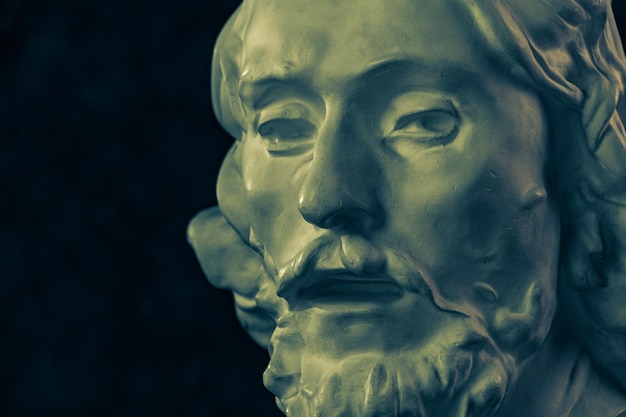

Salvador Dali was known for his iconic mustache, which he claimed was influenced by Spanish painter Diego Velazquez.
Dali believed that he was the reincarnation of his deceased brother, also named Salvador.
The artist once said that he painted with his subconscious mind.
Dali was often seen wearing eccentric outfits and bizarre accessories, such as a cape, gloves, and walking stick.
He would sometimes sleep with a key in his hand, claiming it would awaken him from his dreams.
Dali created the artwork for the famous Chupa Chups lollipop logo in 1969.
The artist had a pet ocelot named Babou, which he would walk on a leash in public.
Dali’s most famous painting, The Persistence of Memory, features melting clocks and was inspired by his personal experience with melting cheese.
He was greatly influenced by Sigmund Freud’s psychoanalytic theories and often explored dream symbolism in his paintings.
Dali was fascinated by the concept of time and even created his own Dali Clock, which is a distorted version of a traditional clock.
In addition to being a painter, Dali also dabbled in film, sculpture, photography, and writing.
Dali believed that he could time travel and would often claim to have witnessed historical events firsthand.
The artist designed a surrealistic dream sequence for Alfred Hitchcock’s film, Spellbound, in 19
Dali once appeared on the TV show What’s My Line? and managed to stump the panel with his identity.
Dali’s autobiography, The Secret Life of Salvador Dali, was published in 19
He was expelled from the Royal Academy of Fine Arts in Madrid for his unconventional behavior and eccentric style.
Dali collaborated with Walt Disney on a short animated film called Destino, which was released in 2003, decades after their initial partnership in the 1940s.
In 1957, Dali created a painting called The Sacrament of the Last Supper, featuring dark and eerie elements, in contrast to the traditional representation of the event.
He once claimed to have been visited by the ghost of his deceased wife, Gala, who became a recurring theme in his artwork.
Dali was heavily influenced by Renaissance painters, particularly Raphael and Michelangelo.
Dali’s obsession with ants led him to incorporate them into many of his art pieces as a symbol of decay and death.
The artist had a fascination with doubles and mirrored images, often using them in his paintings to create a sense of distortion.
Dali’s interest in science and mathematics is evident in his works, such as The Disintegration of the Persistence of Memory, which shows fragmented and disintegrating objects.
He created a series of illustrations for the classic book, Alice’s Adventures in Wonderland, by Lewis Carroll.
Dali believed that he could communicate with the dead through his dreams and often sought guidance from deceased artists and historical figures.
He would frequently stage elaborate stunts and performances, such as arriving at an event in a Rolls-Royce filled with cauliflowers.
Dali was a self-proclaimed narcissist and believed that he was the greatest artist of all time.
He had a pet lobster named Francois, which he would walk on a leash.
Dali’s art often combined religious symbolism with surreal elements, resulting in visually striking and thought-provoking pieces.
The artist was notorious for his outrageous public behavior and attention-seeking antics.
Dali’s work was heavily influenced by his Catalan heritage, often featuring images of his hometown, Cadaques, and the surrounding landscape.
He designed the dream sequence for Hitchcock’s film Vertigo but it was ultimately deemed too extravagant and was cut from the final version.
Dali collaborated with fashion designer Elsa Schiaparelli, creating iconic garments such as the Lobster Dress and the Shoe Hat.
The artist was known for his provocative statements and controversial views, often using shock value to gain attention.
Dali’s painting, Christ of Saint John of the Cross, caused controversy due to its unusual perspective and depiction of Jesus on the cross.
He was inspired by the works of various philosophers, including Nietzsche, Freud, and Dalai Lama.
Dali’s paintings often feature distorted and elongated forms, creating a sense of unease and otherworldliness.
He experimented with optical illusions and surrealistic techniques, such as double images and stereoscopic effects.
Dali’s artistic style progressed from traditional realism to surrealism and eventually to a more mystical and religious approach.
He created a series of holograms in the 1970s, which were considered groundbreaking at the time.
Dali often incorporated Freudian symbols, such as eyes, lips, and sexual imagery, in his artwork.
He once said, Give me two hours a day of activity, and I’ll take the other twenty-two in dreams.
Dali’s painting, The Elephants, portrays elephants with impossibly elongated and spindly legs, creating a dreamlike and surreal atmosphere.
The artist was deeply fascinated by Gala, his wife and muse, whom he often portrayed in his paintings as an enigmatic and mystical figure.
Dali’s legacy continues to inspire and intrigue artists and art lovers around the world with his unique and visionary creations.
Around the world, coffee enthusiasts enjoy Monin coffee concentrate since it is a multipurpose product. Conveniently combining…
The Importance of Choosing the Right Shower for Your Bathroom Renovating your bathroom can be…
Usain Bolt holds the record for the fastest 100-meter sprint in history.Bolt was named Sportsman…
Love is in the air... and it smells suspiciously like chocolate!Roses are red, violets are…
Life's a beach, take a picture and relax.Sun, sand, and salty kisses. That's what beach…
Hungary is home to the largest thermal water cave system in the world.The Rubik's Cube…